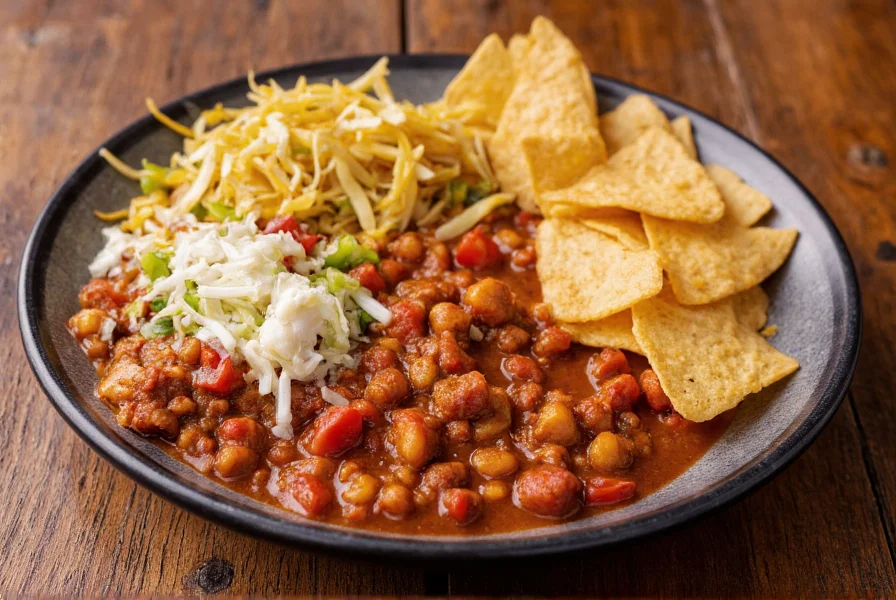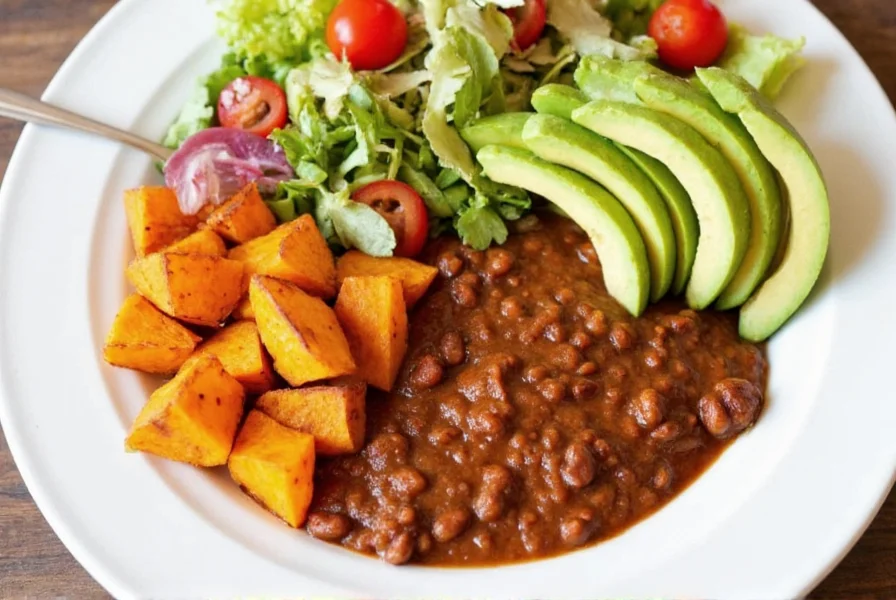When planning a satisfying meal around chili, choosing the right side dishes can transform a simple bowl into a complete dining experience. Chili's complex blend of spices, meat (or beans in vegetarian versions), and tomatoes creates a robust flavor profile that benefits from sides offering contrasting textures, temperatures, and flavor elements. The perfect accompaniments should either cut through the richness, provide a cooling contrast, or add complementary textures that enhance each bite.
Traditional Sides That Perfectly Complement Chili
Cornbread remains the undisputed champion among chili accompaniments for good reason. Its slightly sweet flavor and crumbly texture create an ideal counterpoint to chili's savory heat. The traditional pairing works because cornbread's sweetness helps balance spicy elements while its sturdy structure holds up when dipped into the hearty stew.
Saltine crackers offer another classic option that serves multiple purposes. They provide a satisfying crunch that contrasts with chili's texture, help moderate spice levels when crumbled on top, and function as edible utensils for scooping. For those seeking something more substantial, baked potatoes present an excellent vessel for chili, essentially creating a loaded potato that combines two comfort foods in one.
| Side Dish Category | Top Recommendations | Why It Works |
|---|---|---|
| Bread Options | Cornbread, Biscuits, Garlic Bread | Absorbs flavors, provides textural contrast, balances spice |
| Starchy Sides | Rice, Baked Potatoes, Polenta | Dilutes heat, adds heartiness, creates complete meal |
| Cooling Elements | Coleslaw, Sour Cream, Avocado | Counters spice, adds freshness, provides creamy contrast |
| Crispy Textures | Tortilla Chips, Crackers, Fried Onions | Creates satisfying crunch, adds dimension to each bite |
Vegetable Sides for Balanced Chili Meals
Incorporating vegetable sides creates a more nutritionally balanced meal while providing refreshing contrasts to chili's intensity. A simple green salad with a light vinaigrette offers a crisp, acidic counterpoint that cleanses the palate between bites of rich chili. For heartier vegetable options, roasted Brussels sprouts or grilled zucchini bring complementary earthy flavors that stand up well to chili's robust profile.
Coleslaw deserves special mention as one of the best side dishes for beef chili. The cool creaminess of traditional coleslaw provides immediate relief from spicy elements while the cabbage's crunch adds textural variety. For a healthier twist, try a vinegar-based slaw which offers the same cooling effect with less fat.

Creative Pairings for Unique Chili Experiences
While traditional sides work beautifully, experimenting with unexpected pairings can elevate your chili meal. Polenta serves as an excellent gluten-free alternative to bread, offering a smooth, creamy base that complements both meat and vegetarian chili varieties. For Tex-Mex inspired meals, consider serving chili over nachos for a fun, shareable option that combines multiple textures in every bite.
Those wondering what to serve with vegetarian chili might enjoy roasted sweet potatoes, which enhance the dish's natural sweetness while adding nutritional value. For a refreshing summer option, try a cucumber and tomato salad with lime dressing that provides a bright, acidic contrast to warm chili.
Dietary-Specific Side Dish Solutions
Accommodating different dietary needs doesn't mean sacrificing flavor when serving chili. For gluten-free options that go with chili, consider roasted root vegetables, quinoa salad, or corn-based tortilla chips. Dairy-free alternatives to traditional sour cream topping include avocado slices or coconut yogurt, which provide similar cooling effects without dairy.
When preparing sides for spicy chili, cooling elements become particularly important. Cucumber salad, tzatziki sauce, or even a simple dollop of plain yogurt can provide immediate relief from intense heat while adding complementary flavors. For those sensitive to spice, serving extra lime wedges allows individual customization of the cooling effect.

Beverage Pairings to Complete Your Chili Experience
The right drink can significantly enhance your chili meal. Cold beers, particularly lagers or amber ales, provide refreshing contrast to spicy elements. For non-alcoholic options, iced tea (especially with lemon) or sparkling water with lime offer similar cooling properties. Those preferring warm beverages might enjoy a mild coffee or herbal tea after finishing their meal, as these can help settle the spices.
Serving Tips for Maximum Enjoyment
When presenting chili with sides, consider the temperature contrast. Serving hot chili with cool or room-temperature sides creates a more dynamic eating experience. Arrange sides in small portions around the main bowl rather than mixing everything together, allowing each diner to customize their perfect bite. For casual gatherings, set up a chili bar with multiple side options so guests can create their ideal combination.
Frequently Asked Questions
What's the most traditional side dish for chili?
Cornbread is widely considered the most traditional side dish for chili, particularly in American cuisine. Its slightly sweet flavor and crumbly texture provide the perfect counterbalance to chili's savory, spicy profile. The tradition dates back to early American settlers who combined these two staple foods, creating a meal that was both economical and satisfying.
Can I serve salad with chili?
Yes, salad makes an excellent side for chili. A simple green salad with a light vinaigrette provides a refreshing contrast to chili's richness and heat. The crisp vegetables and acidic dressing help cleanse the palate between bites of hearty chili. For best results, keep the salad simple with ingredients like lettuce, cucumber, and tomatoes rather than heavy, creamy dressings that might compete with the chili's flavors.
What sides work best with very spicy chili?
For very spicy chili, cooling sides are essential. Opt for dairy-based options like sour cream, plain yogurt, or cheese which contain casein that helps neutralize capsaicin (the compound that makes chili peppers hot). Other excellent choices include avocado slices, cucumber salad, or a vinegar-based coleslaw. Starchy sides like rice or baked potatoes also help absorb some of the heat while making the meal more substantial.
Are there gluten-free sides that pair well with chili?
Absolutely. Many naturally gluten-free sides complement chili perfectly. Consider baked potatoes, rice, polenta, roasted vegetables, corn-based tortilla chips, or quinoa salad. These options provide the textural contrast and flavor balance that traditional bread-based sides offer without containing gluten. For a complete gluten-free meal, ensure your chili recipe itself doesn't contain any wheat-based thickeners or additives.
What bread options work well with vegetarian chili?
Vegetarian chili pairs beautifully with a variety of bread options. Cornbread remains an excellent choice, as does crusty sourdough bread which can be used for dipping. For something different, try garlic bread or cheese biscuits which add richness that complements the beans and vegetables in vegetarian chili. Whole grain breads also work well, providing additional fiber that enhances the nutritional profile of the meal.











 浙公网安备
33010002000092号
浙公网安备
33010002000092号 浙B2-20120091-4
浙B2-20120091-4